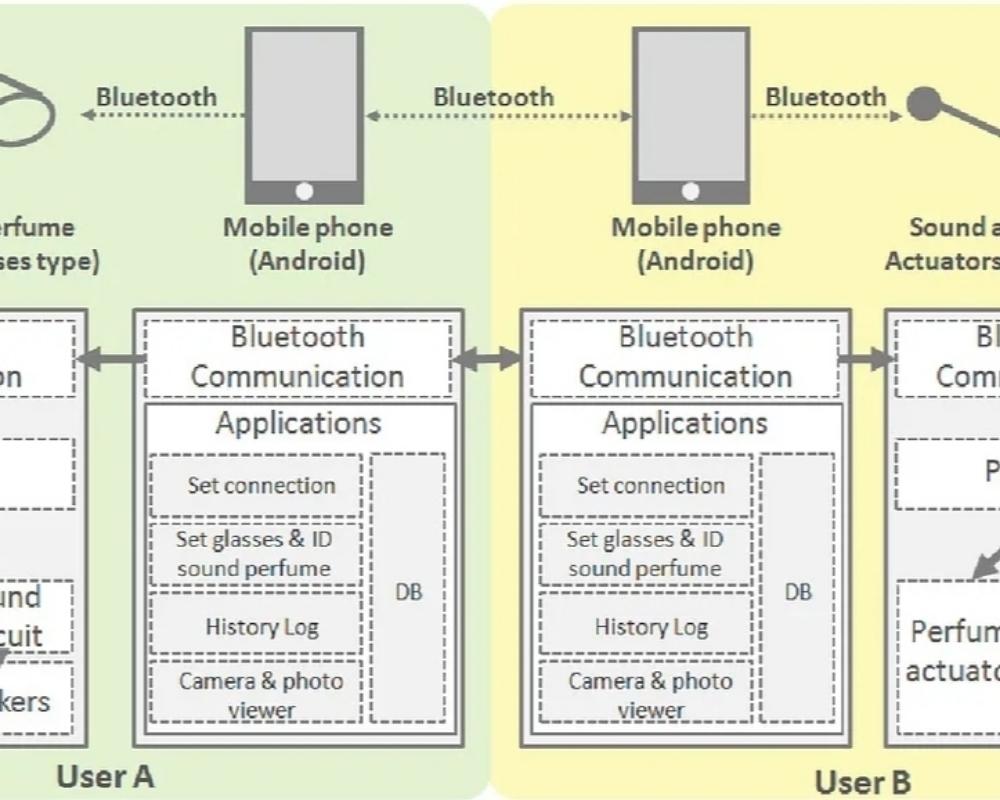Venturing into Uncharted Territory: Exploring the World of Digital Smell
Curated from: vedarham.medium.com
Ideas, facts & insights covering these topics:
13 ideas
·603 reads
3
Explore the World's Best Ideas
Join today and uncover 100+ curated journeys from 50+ topics. Unlock access to our mobile app with extensive features.
Introduction
It was this realization that sparked a curious thought: What if Internet Images could not only transmit visual data but also recreate scents remotely?
This intriguing notion led me down a rabbit hole of exploration into the fascinating world of digital smell technology.
To achieve successful transmission of taste and smell sensations, several critical phases must be addressed: detection (sensing), encoding and decoding (conversion into digital information), transmission, and regeneration (actuation).
6
83 reads
Understanding Digital
Our sense of smell relies on receptors in the nose that detect airborne molecules and transmit signals to the brain, where they are interpreted as specific odors. Replicating this process digitally involves capturing, encoding, and transmitting scent information to simulate the perception of smell artificially. Digital smell, also known as olfactory technology or digital scent technology, refers to the reproduction or simulation of smells using digital devices such as computers, smartphones, or virtual reality systems.
6
66 reads
Application And Necce
Digital smell technology has the potential to revolutionize various industries by enhancing user experiences. In sectors such as entertainment, gaming, and virtual reality, incorporating scent can create more immersive and engaging environments, heightening emotional responses and overall enjoyment.
Undoubtedly, human olfactory plays a significant role in life experiences via emotions and memory, and it’s believed that smell memories are much more prominent than others. Hence, taste and smell are directly connected with mood, stress, and memory functions.
6
52 reads
Medical And Therapeutic Uses
Digital smell technology can play a crucial role in diagnosing and treating various medical conditions. Ancient India, Greece, and China used smell to detect diseases, they recognized that certain diseases were associated with distinct odors, such as the sweet smell of diabetes or the foul odor of infections.
In modern terms, it can aid in the early detection of diseases through scent-based diagnostics or help individuals manage stress and anxiety through aromatherapy applications.
7
46 reads
Environment Monitoring
Also, for individuals with sensory impairments, particularly those who are visually impaired or have anosmia (loss of smell), digital smell technology can provide access to olfactory information that would otherwise be inaccessible.
For instance, it can even detect and analyze odors in industrial settings to ensure compliance with regulations and identify potential hazards. Additionally, it can be used in smart home systems to detect gas leaks or other air quality issues.
6
47 reads
Technology Timeline
In the quest to digitize scent, pioneers like Hans Laube and Charles Weiss introduced primitive scent-emitting devices such as Smell-O-Vision and AromaRama scent-emitting devices in the late 1950s, laying the groundwork for future innovation. Fast forward to 1999, DigiScents wowed the world with iSmell, only to face challenges and close shop by 2001, showcasing the complexities of digital smell technology.
7
47 reads
Continuing.
Despite setbacks, innovators persisted. AromaJet, TriSenx, and K-Opticom expanded the horizons of scent tech, bringing it to internet cafes and personal devices. Globally, Japan, India, and Israel contributed, with Japanese researchers leading innovation with a 3D TV incorporating touch and smell, alongside Sandeep Gupta’s scent prototype at CES 2005. Scentcom showcased a scent device, while in 2013, Japanese researchers unveiled the immersive Smelling Screen, revolutionizing sensory experiences
7
44 reads
Recent Advancements
In recent years, there have been significant advancements in digital smell technology. Improvisations in electronic sensors that detect smell by measuring changes in their properties caused by the molecular vibration of odor molecules have been made. These sensors further analyze the chemical composition, recognize patterns, and employ data processing algorithms to identify specific odors. Additionally, utilizing sensor arrays enhances odor detection accuracy by capturing various aspects of odor molecules, offering insights into smell perception through electronic means.
6
41 reads
Continuing..
In parallel, hardware innovations have emerged, such as microfluidic devices and scent diffusion systems. These advancements enable more immersive olfactory experiences in virtual reality and other digital platforms. Furthermore, research in scent synthesis algorithms, leveraging machine learning and neural networks, focuses on generating realistic olfactory stimuli. These efforts bring us closer to achieving true digital olfaction, revolutionizing the way we perceive and interact with scents in the digital realm.
6
39 reads
Future Of Digital Smell
In the realm of future promising tech, digital smell technology holds vast potential across sectors:
- Virtual Reality and Gaming : By integrating scent cues into virtual environments, developers enhance immersion and realism for players.
- E-commerce and Retail : Scent-enabled devices offer virtual scent sampling experiences, transforming online shopping.
- Health and Wellness : From aromatherapy applications to scent-based therapy, digital smell tech offers innovative solutions for mental well-being.
6
36 reads
Challenges And Oppo
- Food and Beverage Industry : Revolutionizing product interaction especially in apps like Swiggy, and Zomato, from virtual dining experiences to scent-enhanced cooking tutorials.
Despite the progress made, significant challenges remain in the development of digital smell technology. Technical hurdles, such as accurately replicating complex scents and delivering them in real time, pose formidable obstacles. Furthermore, ethical and regulatory considerations surrounding scent-based advertising and privacy must be carefully navigated.
7
36 reads
Conclusion
The realm of digital smell technology represents an exciting frontier for exploration within the ever-expanding landscape of digital innovation.As technology continues to advance and our understanding of scent deepens, integrating smell into the digital realm holds the promise of unlocking new dimensions of experience and interaction Despite the challenges that accompany this endeavor,the relentless pursuit of innovation by researchers and engineers has propelled the field forward, from early experiments with scent-emitting devices to the development of sophisticated scent synthesis algorithms
6
32 reads
...
By embracing these advancements and remaining open to the possibilities that lie ahead, we can envision a future where the sense of smell plays an integral role in our digital lives, enriching our experiences and interactions in ways previously unimaginable.
6
34 reads
IDEAS CURATED BY
卐 || एकं सत विप्रा बहुधा वदन्ति || Enthusiast || Collection Of Some Best Reads || Decentralizing...
CURATOR'S NOTE
Namaskaram 🙏, As I was traversing and pondering upon the vast array of sensors that have evolved and found application in technology, from cameras capturing images to microphones capturing sound, I couldn’t help but notice a conspicuous absence:of the sense of Smell
“
Similar ideas
2 ideas
Why Do Smells Trigger Memories?
scientificamerican.com
6 ideas
Read & Learn
20x Faster
without
deepstash
with
deepstash
with
deepstash
Personalized microlearning
—
100+ Learning Journeys
—
Access to 200,000+ ideas
—
Access to the mobile app
—
Unlimited idea saving
—
—
Unlimited history
—
—
Unlimited listening to ideas
—
—
Downloading & offline access
—
—
Supercharge your mind with one idea per day
Enter your email and spend 1 minute every day to learn something new.
I agree to receive email updates



